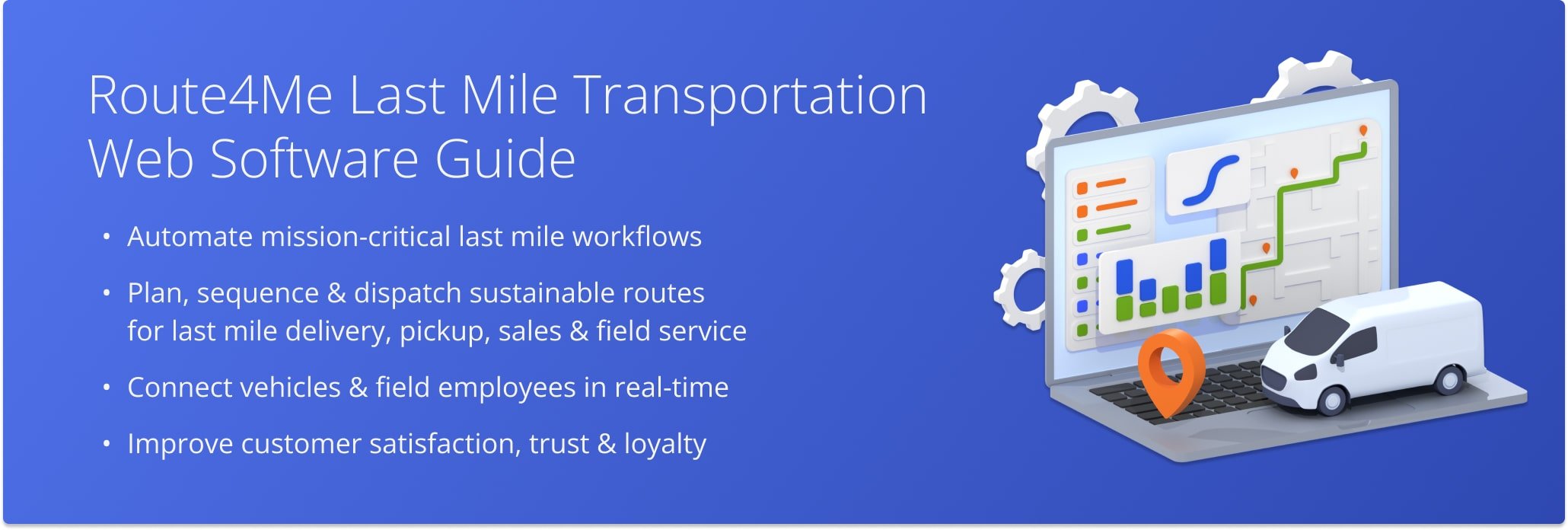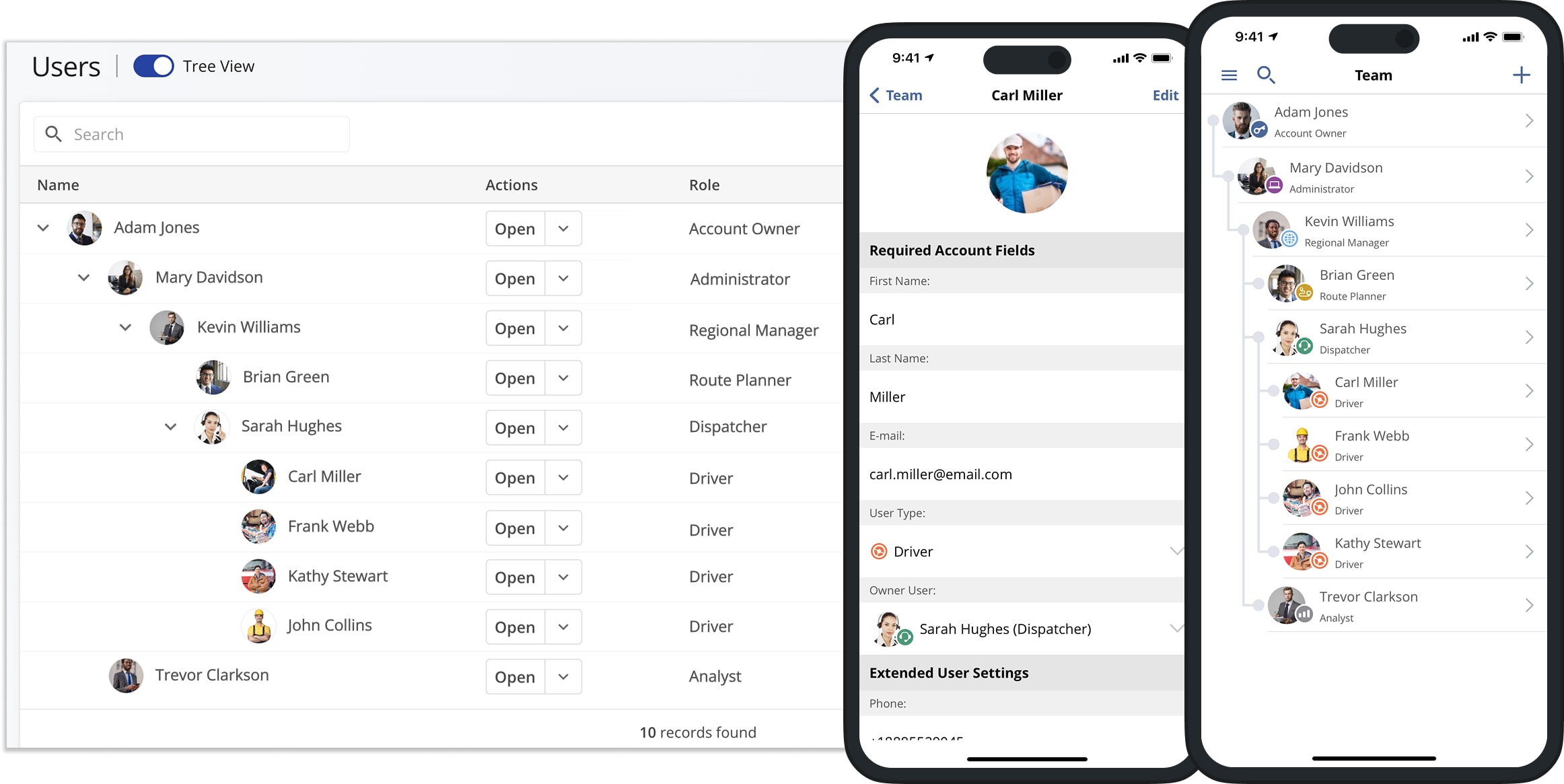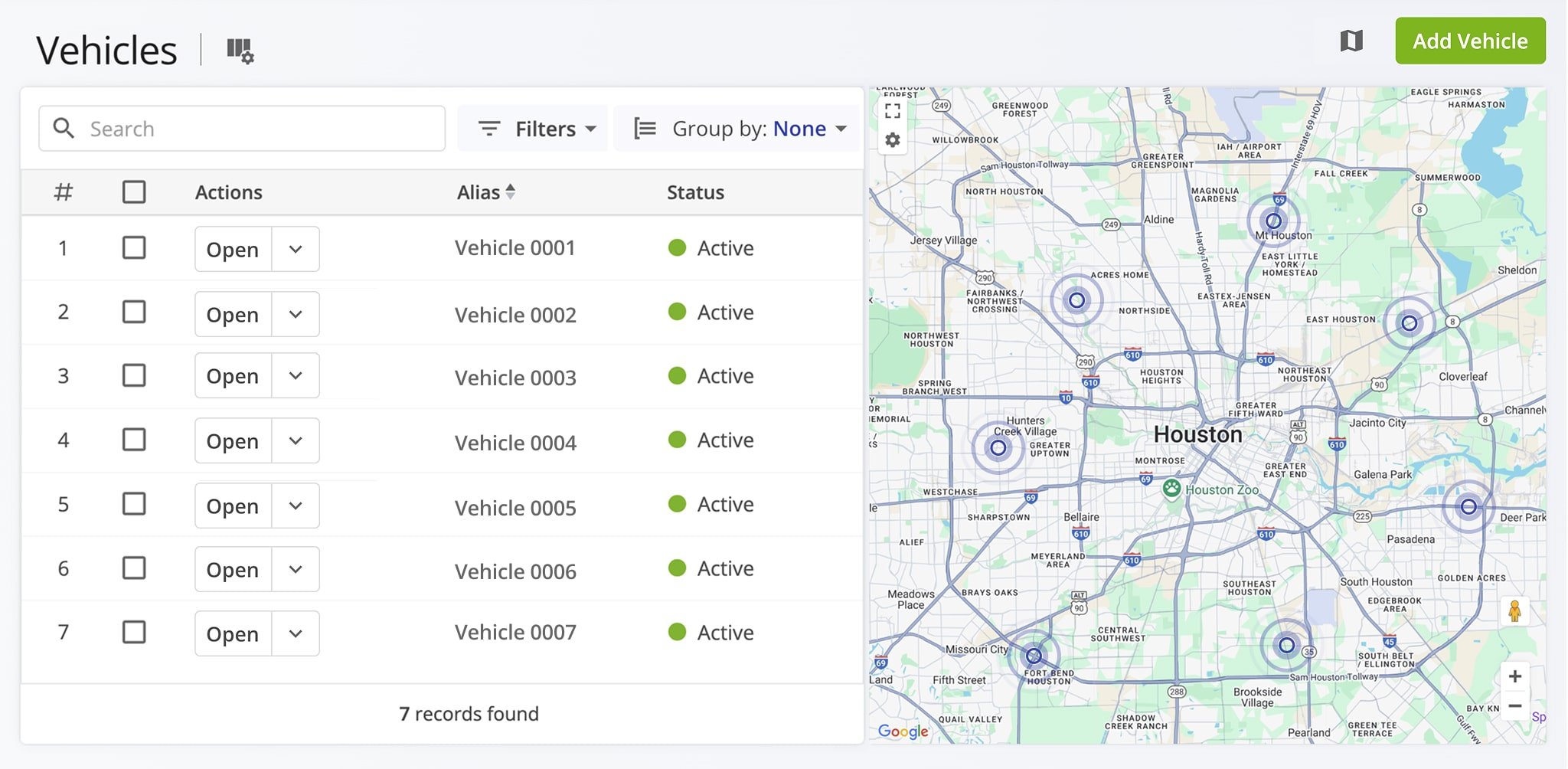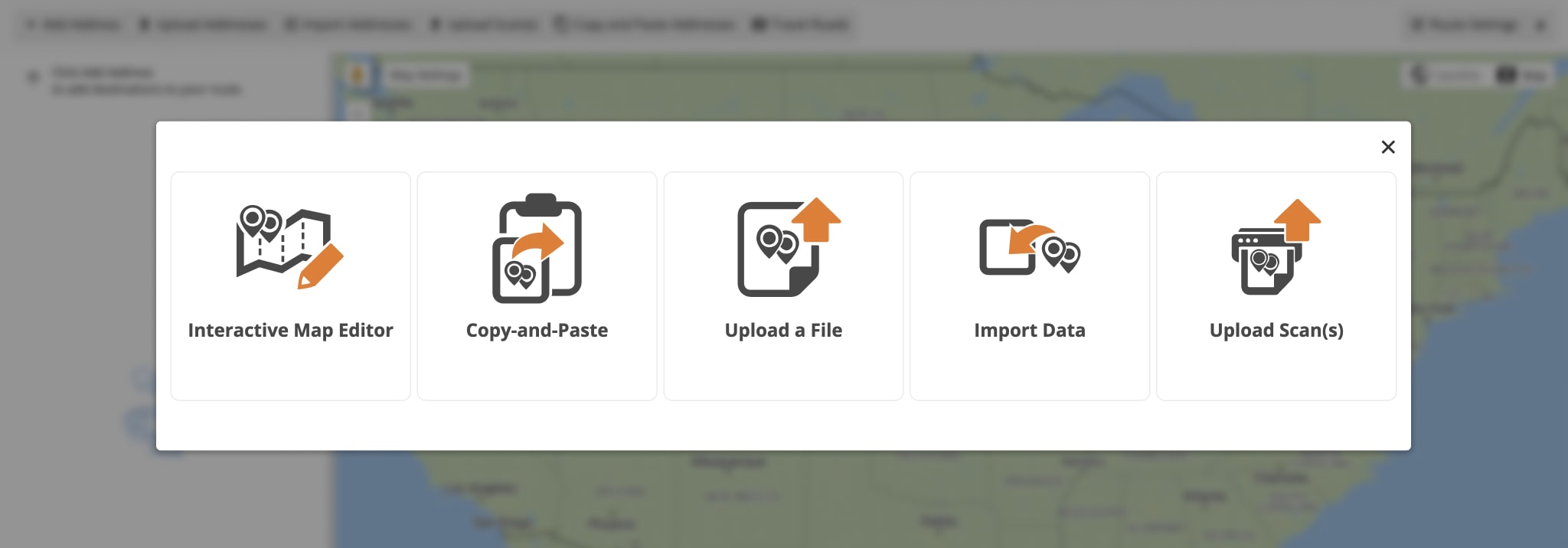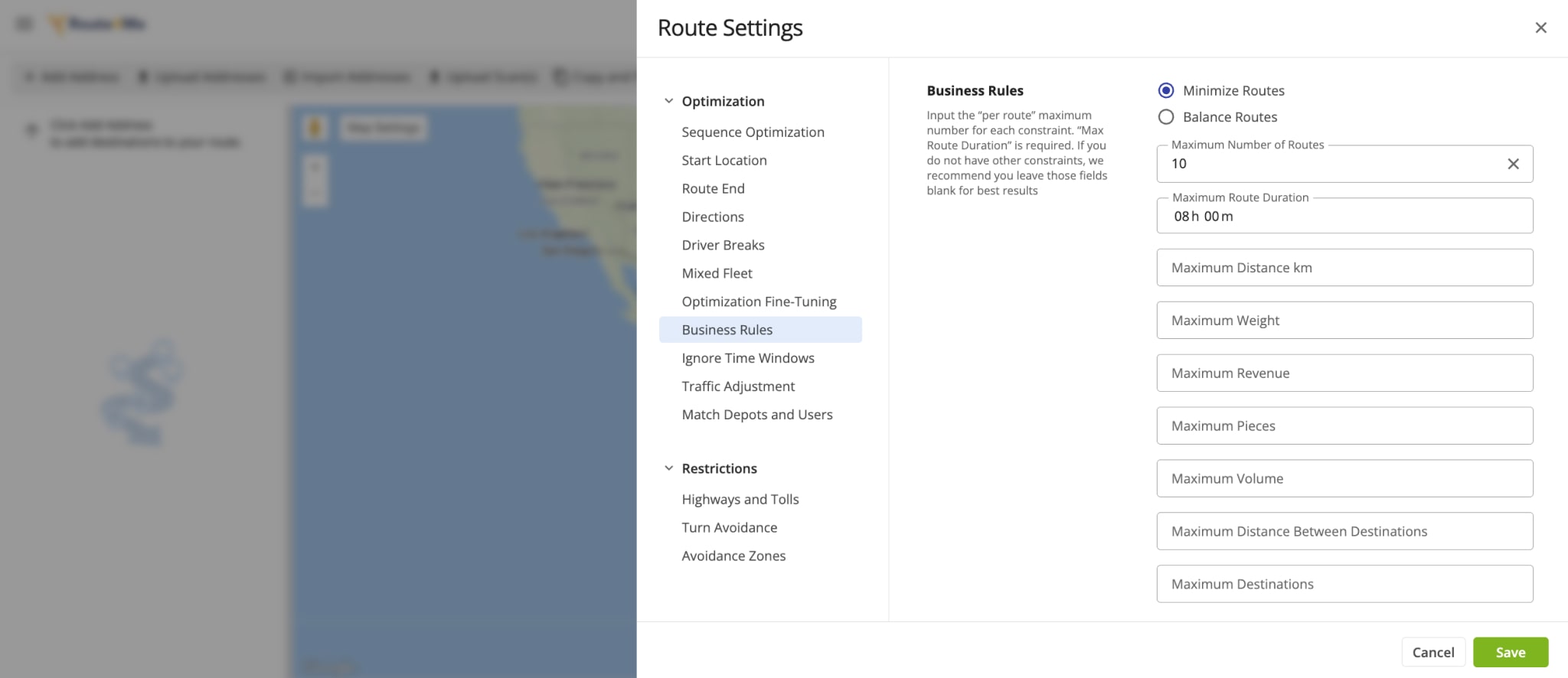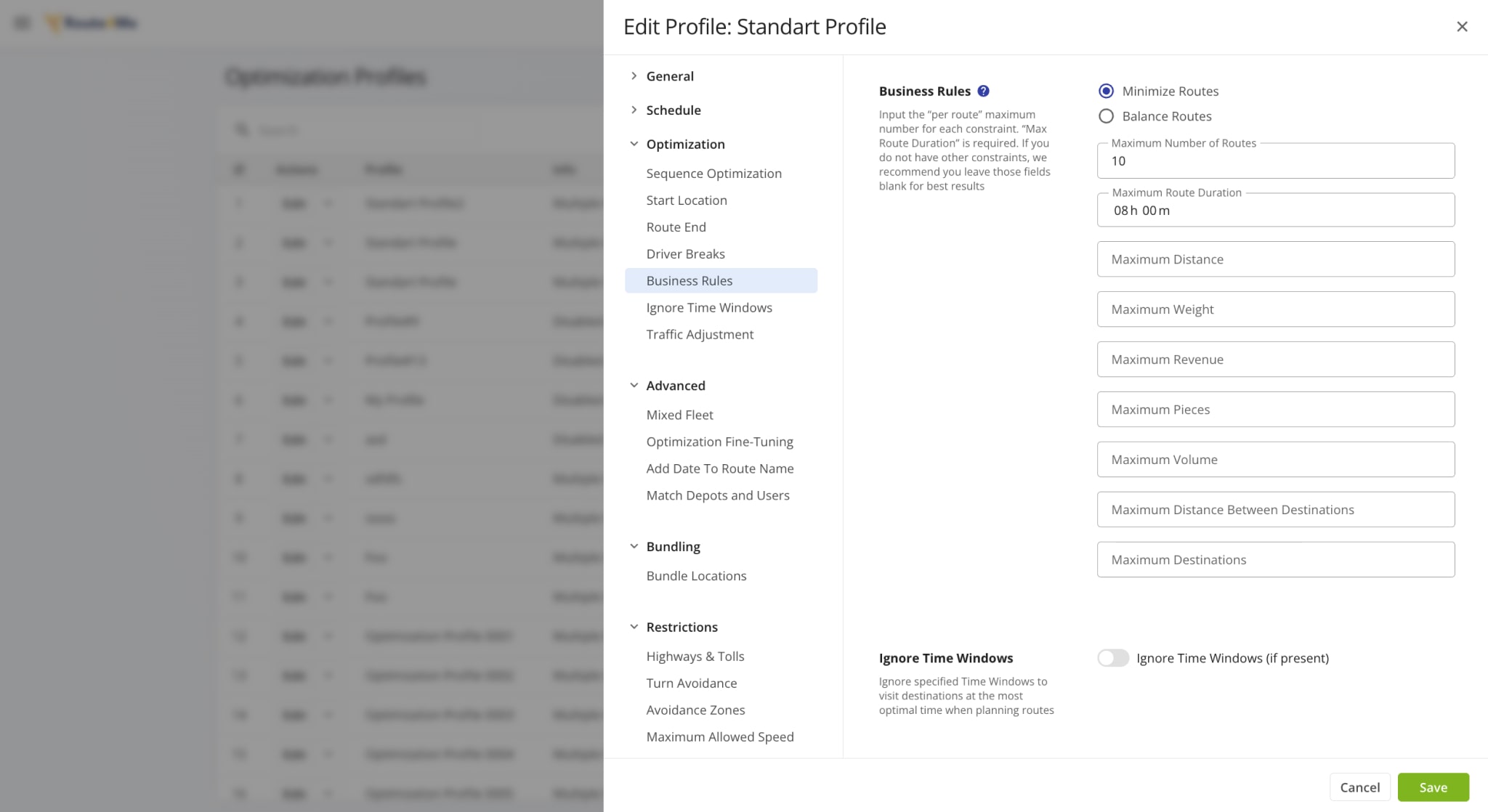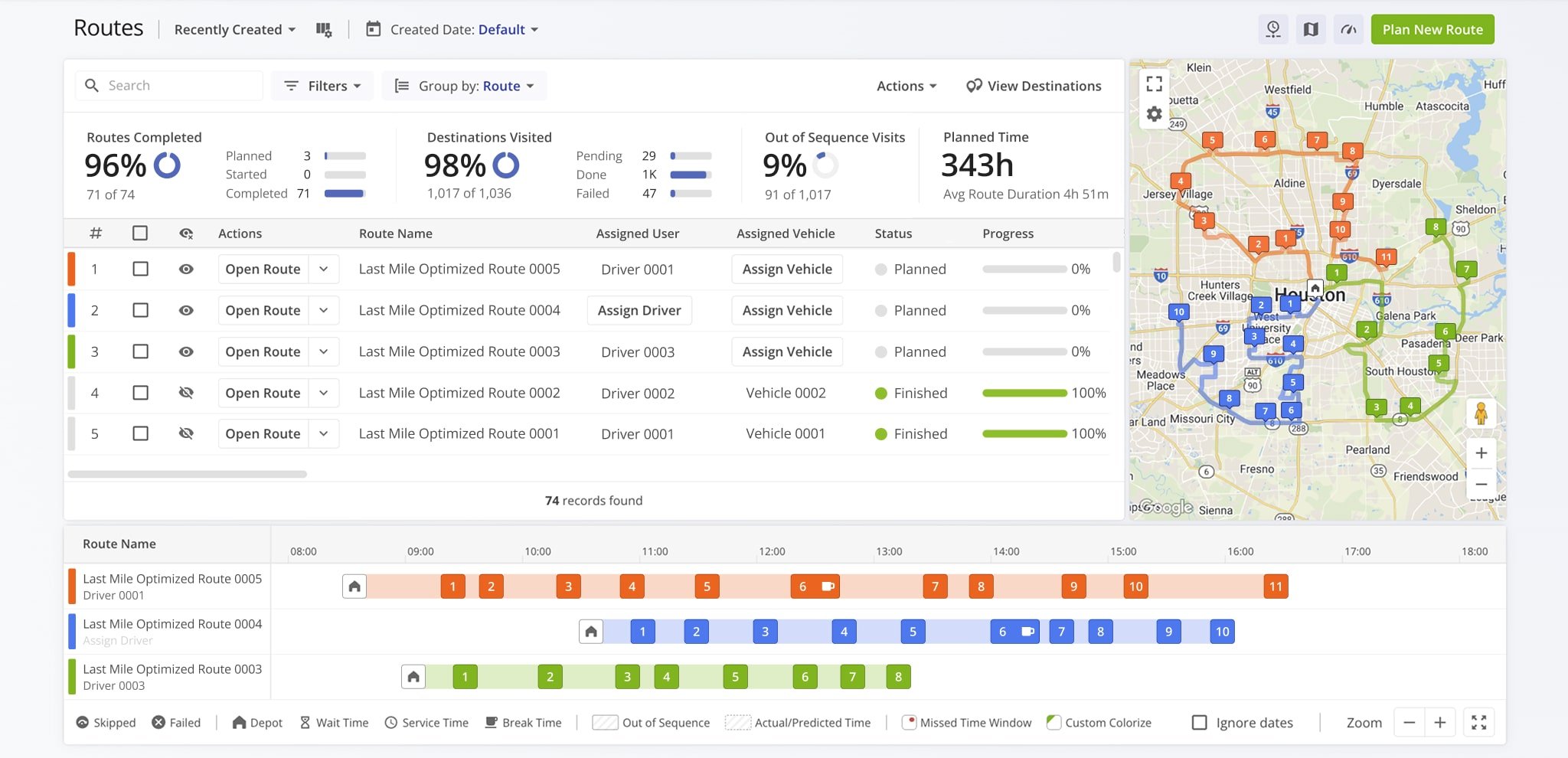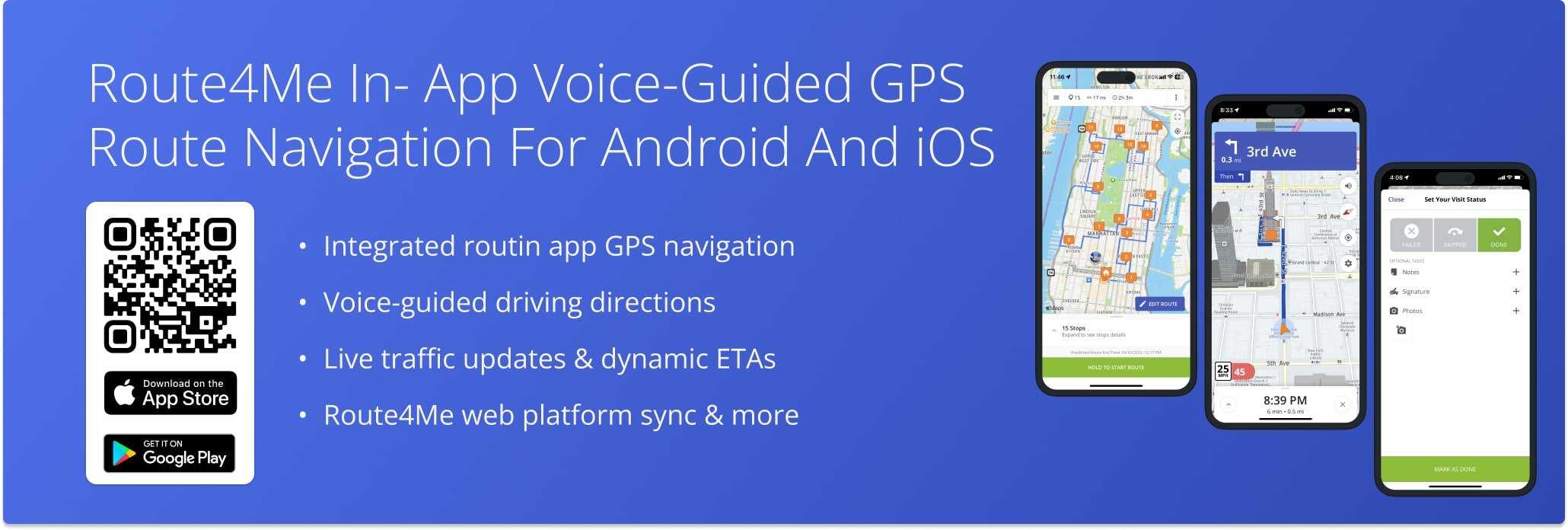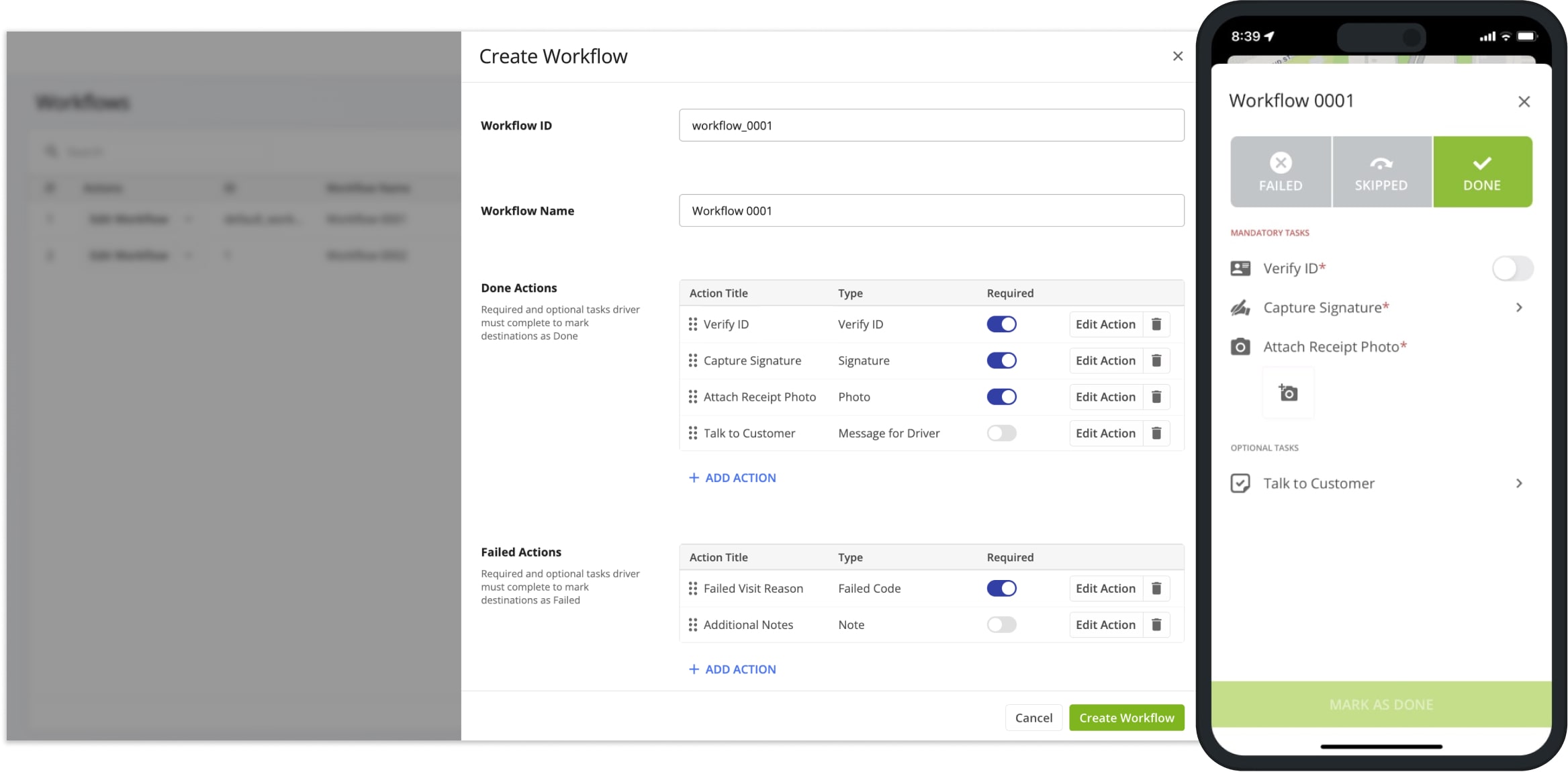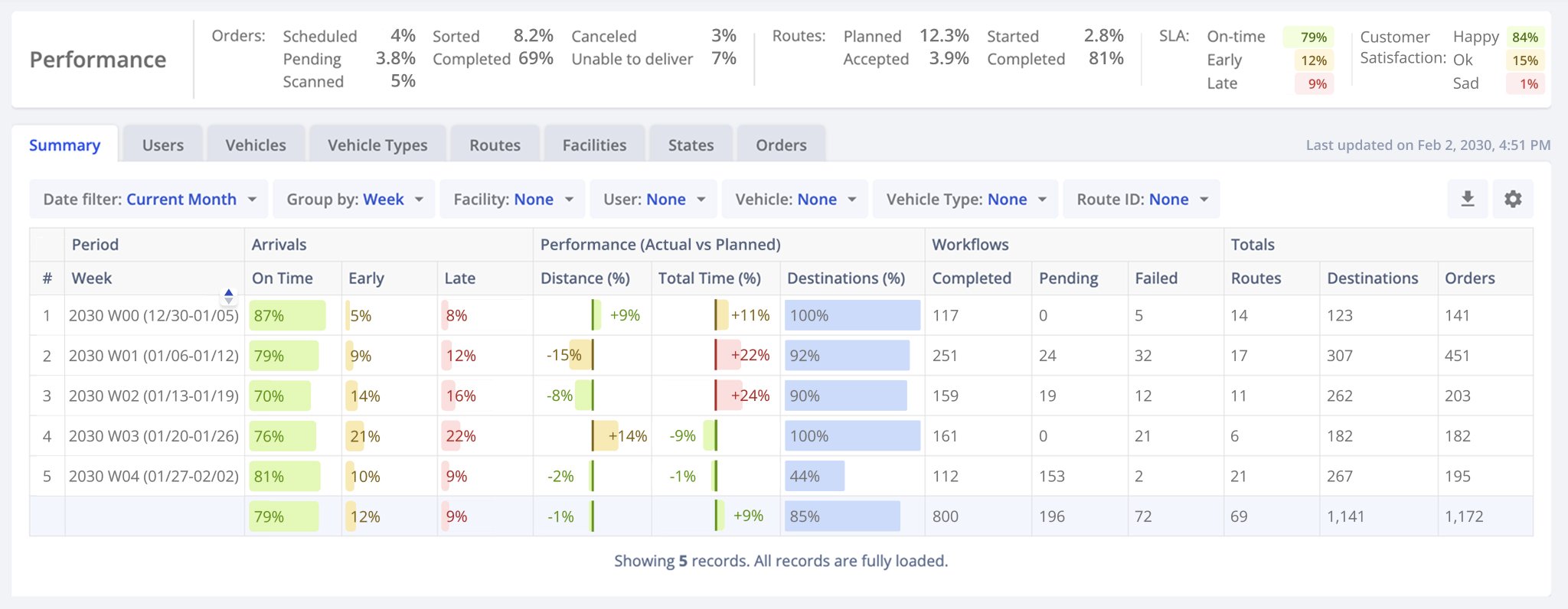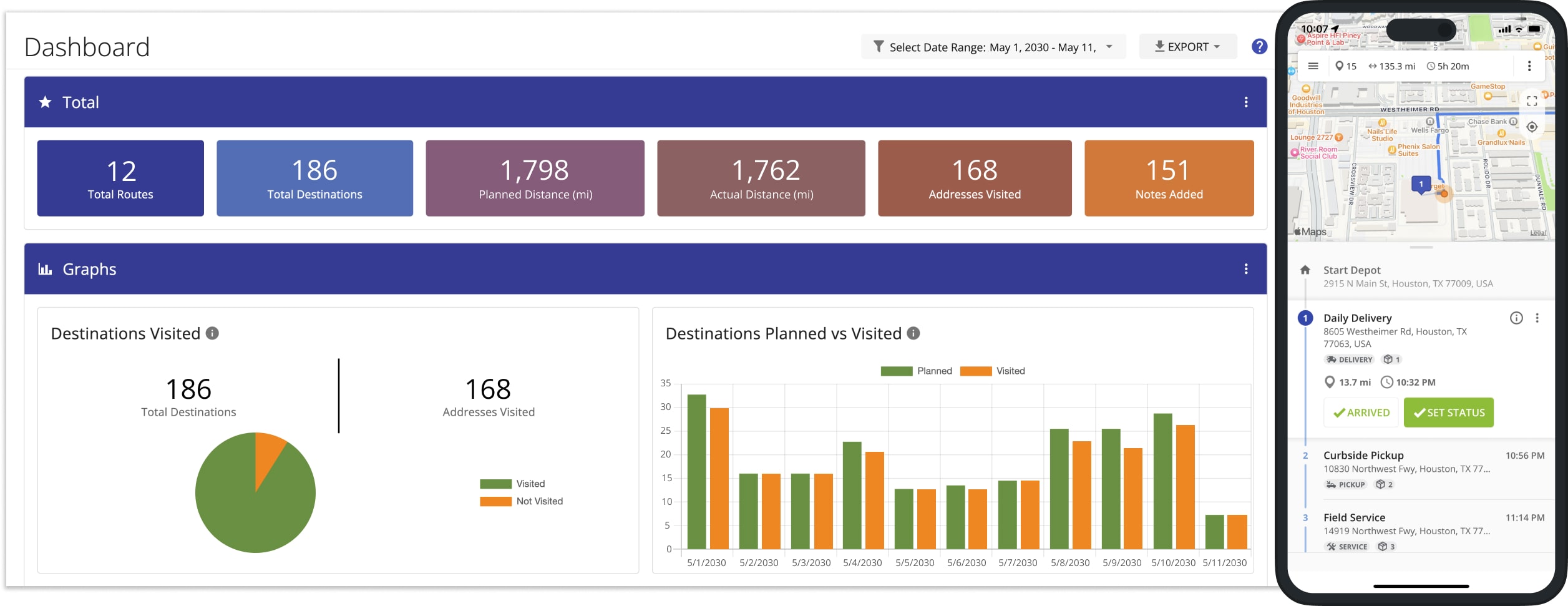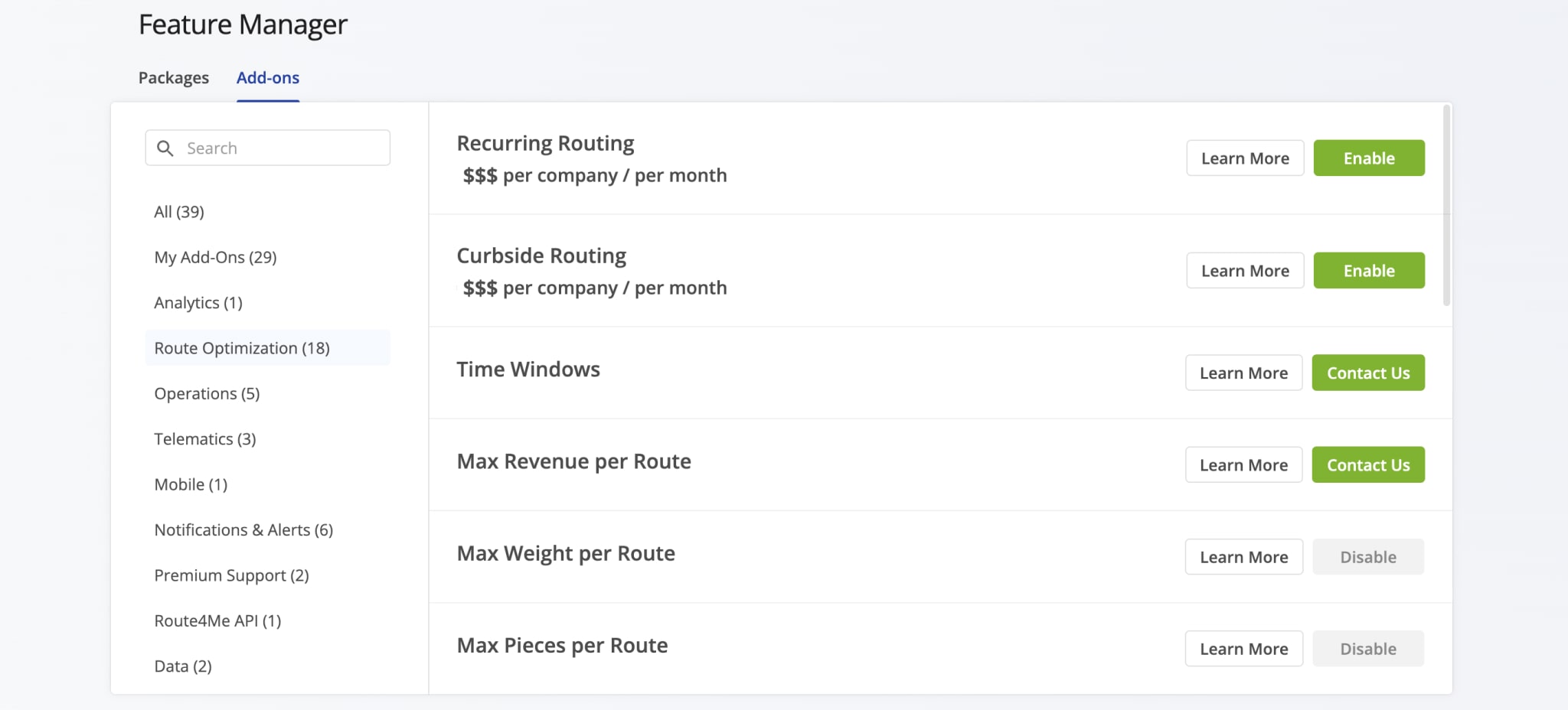Route4Me Last Mile Route Optimization Web Platform – Getting Started Guide
Route4Me helps growing businesses conquer last mile complexity and deliver service their customers can trust. With more than 3 billion miles optimized over 750 million stops and 30 million routes, Route4Me’s patented, proven technology sets the industry standard for speed, simplicity, and sustainability. In this guide, you can learn how to use Route4Me’s Last Mile Business Route Optimization Software. Specifically, plan, sequence, and optimize routes for delivery, pickup, sales, and field service, add drivers, connect vehicles, manage teams, dispatch routes, manage and edit routes, mobile driver apps, reporting and analytics, and more.
Table of Contents
Add Team Users And Connect Fleet Vehicles
With Route4Me’s trusted route optimizer, you can create an organized team of drivers, route planners, dispatchers, managers, and other roles. Depending on your unique last mile routing and business needs, each user can have custom account-level permissions for route visibility, asset tracking, customer management, routing, etc.
Furthermore, you can dispatch routes to drivers and assign users with custom access and permissions, required tasks, and more. To add new users or manage your Route4Me Team, go to “Team & Equipment” > “Users” in the Navigation Menu. NOTE: Learn more about Route4Me’s Team Hierarchy, User Types, and Account Level Permissions.
With Route4Me’s vehicle fleet management software, you can easily create and manage a fleet of cars, vans, trucks, trailers, semis, heavy equipment, and other vehicles with specific parameters. Furthermore, you can automatically import and connect GPS vehicles from various telematics vendors. Once your fleet is set up, you can dispatch routes to vehicles, track vehicles on a map in real-time, check fuel expenses and CO2 emissions, and more. To add and manage vehicles in your Route4Me fleet, go to “Team & Equipment” > “Vehicles” in the Navigation Menu.
Import And Upload Customer Locations To Your Route4Me Account
Your Customer Locations page serves as a centralized database where you can manage and organize a large number of Customer Locations. You can synchronize in real-time Customer Locations across multiple users, accounts, and devices, ensuring consistent and up-to-date information. Additionally, you can easily select Customer Locations to plan and optimize last mile routes. Learn more about Route4Me Customer Locations.
Plan, Schedule And Optimize Last Mile Routes With Business Rules
With Route4Me, you can easily plan and optimize the most optimal, efficient, profitable, and sustainable multi-address routes. In this section, you can learn how to plan and optimize routes using Route4Me’s fastest route planning software. Specifically, add, upload, and import addresses, use Optimization Profiles, schedule routes, and use different optimization types and custom route settings. You’ll also learn where and how you can manage planned routes with Route4Me.
Routing Methods – Add, Import, Upload And Select Addresses On The Map
To plan and optimize routes, you need to import addresses. For maximum convenience and efficiency, Route4Me’s trusted delivery routing software enables you to easily add route addresses from another system, upload spreadsheets with addresses, copy and paste addresses, upload files from Google Drive or Dropbox, or pick addresses right from the interactive map. To plan a new route, go to “Dynamic Routing” > “Plan New Route” in the Navigation Menu and select a preferred method for adding or importing route addresses.
Business Rules – Use Route Planning Constraints With Optimization Profiles And Route Settings
Route4Me’s patented enterprise route optimization software sets the industry standard for speed and accuracy, enabling you to sequence the most optimal and efficient multi-address routes. Furthermore, Route4Me provides flexible and task-specific route optimization constraints and business rules. For example, you can plan routes with such Routing Business Rules as Time Windows for customers, Avoidance Zones, Vehicle Capacity Constraints, Driver Breaks, etc. Additionally, you can use such Route Optimization Constraints as Maximum Number of Stops per Route, Maximum Route Distance, Maximum Weight, Maximum Pieces and Maximum Revenue, and more.
Moreover, to make your route planning process faster and more efficient, you can create and re-use custom Optimization Profiles. Specifically, Optimization Profiles are route settings templates, where you can add a set of unique route parameters, business rules, and optimization constraints and re-use your profiles for planning new routes with the fastest delivery routing software. Additionally, learn more about Planning and Optimizing Routes Using Route4Me’s Optimization Profiles.
Manage Routes – Route Editor, Routes Map, Routes List
Next, you can conveniently manage and edit your planned, scheduled, and optimized routes. Furthermore, you can easily handle last-minute changes, insert stops, remove stops, attach additional order details, reassign drivers and vehicles, and instantly synchronize all updates across the team, connected accounts, and mobile driver apps. In detail, Route4Me’s best route management software provides multiple route management tools for your unique routing and last mile business needs.
| Tools | Description |
|---|---|
| Routes Map | Route4Me’s Routes Map enables you to open and simultaneously manage multiple routes on the same map and timeline. Specifically, you can move stops between routes using the timeline, compare route metrics, view routes side by side on the map, track multiple drivers and vehicles on the same map, insert stops and addresses, adjust Time Windows, reschedule routes, track route status, progress, and completed deliveries, and more. |
| Route Editor | Route4Me’s Route Editor is your primary tool for opening, viewing, and managing individual planned routes. You can use the Route Editor to open routes, check route metrics and KPIs, manage stops and addresses, customize the route map, adjust route and optimization settings, track route progress and stop statuses in real-time, synchronize route changes with mobile driver apps, track the assigned driver and GPS vehicle, check attached proof of delivery, and more. |
| Routes List | Route4Me’s Routes List is a centralized database where you can store and easily manage hundreds of thousands of planned, optimized, and scheduled last mile routes. Furthermore, you can use your Routes List to search routes, track route progress and order statuses in real-time, assign drivers and vehicles to routes, reschedule routes, manage routes, and more. |
Dispatch Routes – Assign Routes To Drivers And GPS Vehicles
With Route4Me’s reliable route management software, you can dispatch routes to drivers and vehicles at the touch of a button. Once a route is dispatched, the driver can open the route using Route4Me’s Mobile Driver app, start and navigate the route, complete tasks, and finish the route. Furthermore, as the driver or GPS vehicle travels the route, you can track the route progress and driver and vehicle location on the map in real-time. To dispatch a route to a driver or send a route to a user, simply assign the preferred user to the route. Additionally, learn more about Assigning Drivers and Users to Routes and Dispatching Routes to GPS Vehicles. Also, you can learn how to Track Drivers and Vehicles on the Live Route Map.
Mobile App Voice-Guided GPS Route Navigation For Field Employees
Route4Me’s Mobile Driver Apps provide seamless continuity throughout the entire multi-stop route planning, optimization, navigation, and visitation process. Drivers can use Route4Me’s mobile apps for sequencing and navigating efficient day-to-day multi-address routes. Furthermore, last mile businesses can use Route4Me’s mobile apps for dispatching routes to drivers, completing driver tasks, collecting electronic signatures, proof of delivery, proof of visit, and more.
For your convenience, you can install Route4Me’s mobile app on both Android and iOS Apple devices. Additionally, learn how navigate and complete routes on Route4Me’s Android Routing App and iOS Mobile Route Planner.
Proof Of Visit Mandatory Driver Tasks And Destination Workflows
Route4Me Workflows consist of optional and mandatory tasks drivers must complete to mark destinations as “Done” or “Failed“. You can create multiple Workflows with unique tasks and assign them to specific addresses on your optimized routes. You can enable Workflows for individual customer addresses or entire routes, with proof of visit settings synched to Route4Me’s Mobile App in real time. Learn more about Route4Me’s Proof of Visit Workflows.
Track Team Users And GPS Vehicles On Routes With Location Updates
Route4Me’s real time GPS tracking enables you to track the exact location of drivers, vehicles, and assets on routes. See where your drivers are and where they’ve been with detailed tracking history, route compliance data, and more. The integrated GPS App for iOS and Android GPS Route App record and collect all route completion activities. These are then synchronized with your Route4Me account in real time and become instantly available with no additional action required.
Learn more about Route4Me user, vehicle, and asset tracking on routes.
Analytics and Reporting – Planned VS Actual Route, Driver, Asset KPIs
The Business Insights dashboard is a powerful, flexible, and easy-to-use performance reporting tool for enterprise businesses. You can customize the dashboard to filter, sort, group, and visualize detailed, real-time statistics generated by your field team members, vehicle fleet, and routing activities. Drilling down into detailed metrics, KPIs, and analytics enables you to gather actionable last mile intelligence for any part of your business. Compared to the Routing Dashboard, the Business Insights page provides more in-depth and flexible data filters.
Route4Me’s reporting and analytics tools are designed to help you collect and visualize real-time statistics generated by your team, vehicles, and other assets. You can use your Routing Dashboard to track the real-time progress of your drivers and field team, monitor your organization’s overall performance, compare weekly or monthly KPIs, check Planned vs Actual metrics, track CO2 emissions, and more. You can also use your Route4Me Activity Feed to monitor and audit your entire operation with the most reliable route management software.
Feature Manager – Customize Last Mile Route Optimization Software
Route4Me Subscription Packages are designed to solve specific last mile optimization problems. Furthermore, you can easily customize your Route4Me software solution. In detail, you can use Route4Me’s Marketplace to enable task-specific add-ons and modules based on your unique routing requirements and business model. As a registered user, you can customize your solution using Route4Me’s Feature Manager. To do so, go to “Settings” > “Feature Manager” from the Navigation Menu.
Furthermore, Route4Me features additional advanced account configurations. Specifically, you can enable and disable unique settings and features for your Route4Me trusted delivery routing software solution to add an extra layer of customization. Learn more about using Route4Me’s Advanced Configuration Editor.
Visit Route4Me's Marketplace to Check out Associated Modules:
- Operations
Custom Data Add-On
- Operations
Advanced Team Management Add-On
- Route Optimization
Time Windows
